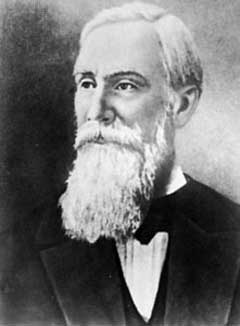Errors, crowds, measurements, or somewhere I heard it all.

Write this post prompted me to post about nuts . Unfortunately, I did not read the book to which the author refers, but still I allow myself to discuss this topic in some way.
An experiment is proposed in which people measure the amount of nuts in a pot. There are many nuts and they do not lie neatly, so it is rather difficult to measure exactly their number. And here begins the special magic.
')
This task was solved starting from the 17th century and is still being solved a million times a day, namely, determining the degree of reliability of measurement. Why is the example with nuts good? Because it is there that one can show all kinds of measurement errors and analyze the occurrence, as well as indicate ways to reduce the error.
So, the errors are divided into three types:
1. Random error - an error that varies (in magnitude and in sign) from measurement to measurement. It can be caused by both the imperfection of the device and the imperfection of the measured system itself. In our case: it is clear that it is difficult to count a large number of nuts on the screen, it is easy to make a mistake (brain imperfection) or the option that there are several pictures and they randomly change, then different people consider different real numbers of nuts.
2. Systematic error - an error that varies in time according to a certain law (a particular case is a constant error that does not change over time (less than the division of the device can not be measured)). Systematic errors may be associated with instrument errors (wrong scale, calibration, etc.) not considered by the experimenter. In our case, this assumption by some users of the fact that in fact it is not a plate, but a vase, where there are still a lot of nuts.
3. Rough error - the error resulting from a violation of the methodology of the experiment. In scientific jargon: emissions , this is exactly those 99999999 or the question about human-like robots to the President.
But the errors are, of course, very good, but we need to always know the exact measured value. So, to know exactly how much of what in the continuum system is not possible. Nuts either 100 or 101, but 100cm does not happen. Therefore, everything to which we should strive to reduce this error, and in order to reduce it, one must know the enemy by sight :)
Let's start to eliminate errors in the reverse order. Rough errors on the one hand the simplest, on the other the most difficult to consider. Seeing on the graph of a certain value at one point, a strange behavior with great probability the researcher will throw it away and write it down for an error (the voltage jumped, rewrote incorrectly from the device and so on). However, there is a subtle point that you can skip some unknown effect. In our case, we do not expect anomalies in the number of nuts and discard false answers in advance.
Systematic errors are more difficult to eliminate; additional information about the system needs to be obtained. In this experiment, the information was obtained, the plate is flat, so there can be no surprise.
Well, now the most interesting, random error. It would seem unremovable. Well, how can you affect the chance? Actually you can. The law of large numbers, discovered by the great Russian mathematician Chebyshev, comes to our aid. He claims that:
There will always be such a number of tests in which, with any probability set in advance, the frequency of occurrence of a certain event will differ as little as desired from its probability.
It is a little abstruse and not clear, but for us this means that if the measurement error is really random and this randomness (measure of randomness - the distribution is beyond the scope of this note) does not change with time, then having made many measurements you can arrive at a predetermined error. Even easier, the more measurements - the closer the arithmetic average to the measured value.
That is, there is no magic with nuts, as it was said, that was what was required to prove.
Another interesting fact. The Chebyshev-Bernoulli theorem says nothing about how the error is distributed and how much each dimension “lies”; it only requires that the measurements are independent of each other and on the number of tests. However, it was experimentally found that errors are usually distributed according to the Gauss law. Therefore, the error should be sought by the formula:

I suggest the author of the post to calculate the error and see if the users are in the law of Gauss and what is their accuracy class :)
Ps. This is my PPNH.
Source: https://habr.com/ru/post/37045/
All Articles